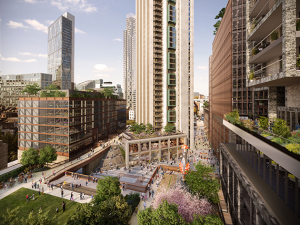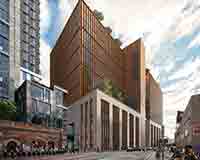
Mayor Boris Johnson’s deferral of a decision on the controversial Bishopsgate Goodsyard scheme, E1, has cheered Hackney Council and campaigners.
It now looks as if the mayor will leave a decision on the £800m redevelopment, which includes more than 1,300 homes,
to his successor, after the Greater London Authority urged him to reject the plans.
The argument brings to light an important tool in the mayor’s relatively small arsenal of direct powers, but one that also risks undermining the democracy of the planning system.
Call-ins give the mayor of London a direct power to determine what can be built in an area, and in the current “more homes at any cost environment”, that Is a substantial weapon.
Last week, independent mayoral candidate John Zylinski said that if he won he would call in 12 schemes a day and issue planning permissions himself to boost development (EG, 16 April, p37). And he is not alone.
At the recent Estates Gazette Residential Summit, former government minister and erstwhile mayoral candidate Steve Norris said the threshold should be lowered for mayoral intervention.
“If you are going to get that kind of step change in numbers, you have to overcome the reluctance of local authorities to pursue the same agenda as the whole of London,” he said.
But call-ins, while good for increasing numbers and density in areas stifled by nimbyism, risk changing the balance of power by taking planning decisions out
of the hands of locally elected authorities.
“Its an incredibly strong power to have,” says Claire Fallows, partner at law firm Charles Russell Speechleys.“The only public scrutiny comes with the election of the mayor. It’s not like the arrangement in the city regions, where the mayor’s call-in can sometimes be vetoed.”
However, Johnson has used the powers only a handful of times, on big schemes like the Southall Regeneration, or on projects that cross boroughs, like the Mount Pleasant Sorting Office, EC1.
Steve Sanham, development director at HUB, says: “As much as we’d like to think Boris, with all his buffoonery, will just decide what he likes and what he doesn’t, he calls things in only if it looks like the local authority is going to make a decision that is contrary to policy – policy that is there to set a democratically acceptable framework for planning decisions.
“He came in and said he was going to use call-ins sparingly,” said Fallows. “Most of his decisions have been on big schemes, or ones that cross two boroughs.”
So the issue is more what would happen if those powers were increased, or how a new mayor might decide to use them.
“Our view is that the call-ins work quite well,” says Pat Hayes, executive director of regeneration and housing at Ealing Council. “They are not an issue, and not unhelpful. It’s just how they are used.
“The industry has to understand it does not work just one way.”
At the moment, London has a mayor that supports development, but developers should be careful what they wish for. Calls-ins began as a negative power – that is, they allowed the mayor only the power to refuse a development. Now they have evolved to allow permissions too.
In a worst-case scenario, a mayor could use his powers to call in schemes to stop development, creating uncertainty for developers, never sure when they could be called in.
“Our concern is a future mayor who is anti-development or swayed by local lobbyists and could become a threat to development,” says Hayes.
In a mayoral race where candidates are grasping for tools that instantly bulk up housing delivery, call-ins may seem attractive. But by surpassing the democratic process, they risk undermining a system that is slow but at least offers stability and accountability.
When the mayor can call in a scheme
According to the Town and County Planning (Mayor of London) Order, 2008, the mayor can refuse applications of potential strategic importance if they are contrary or prejudicial to the London Plan or strategic planning in London.
However, the mayor also has the power to act as the planning authority when:
• the development, or any issues associated with it, could have a significant impact on the implementation of the spatial development strategy, in this case the London Plan;
• the development crosses borough boundaries, or will affect more than one London borough; and
• there are sound planning reasons to issue a direction.
Under the order, PSI schemes and large-scale developments include:
• those including more than 150 homes;
• a scheme in the City of more than 1m sq ft, in central London of more than 215,000 sq ft, and in outer London of 161,000 sq ft;
• tall buildings of more than 25m next to the Thames, more than 150m in the City of London and more than 30m outside the City.











